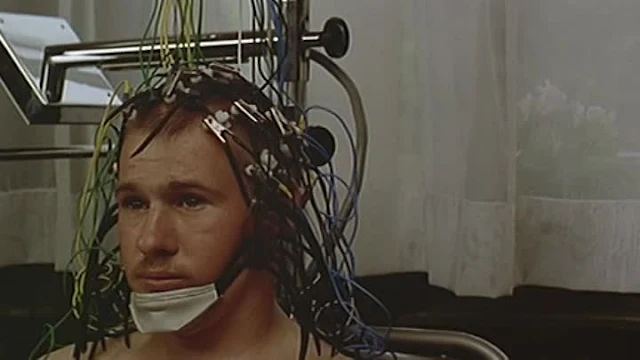The Petrified Forest (Archie Mayo, 1936)
Cast: Leslie Howard, Bette Davis, Humphrey Bogart, Genevieve Tobin, Dick Foran, Porter Hall, Charley Grapewin, Joe Sawyer, Paul Harvey. Eddie Acuff, Adrian Morris, Nina Campana, Slim Thompson, John Alexander. Screenplay: Charles Kenyon, Delmer Daves, based on a play by Robert E. Sherwood. Cinematography: Sol Polito. Art direction: John Hughes. Film editing: Owen Marks. Music: Bernhard Kaun.
Robert E. Sherwood was once America's pre-eminent playwright, winning three Pulitzer Prizes for drama (plus one for a biography of FDR's relationship with Harry Hopkins). But his plays are rarely revived today, and The Petrified Forest shows why: It's talky and its characters are more vehicles for ideas than human beings. The protagonist, Alan Squier, wears the label Effete Intellectual like a badge of honor. The leading lady, Gabrielle Maple, is the Wide-Eyed Naïf. The villain, Duke Mantee, is all Animalistic Evil. The actors who play them in the film -- Leslie Howard, Bette Davis, and Humphrey Bogart, respectively -- do what they can to bring them to life, but they still have to speak Sherwood's lines, or the equivalents provided by screenwriters Charles Kenyon and Delmer Daves. Sometimes the dialogue consists of things no human being ever found the way to utter: "The trouble with me, Gabrielle, is I, I belong to a vanishing race. I'm one of the intellectuals.... Brains without purpose. Noise without sound, shape without substance." Howard makes what he can of this self-pitying poseur, but who sheds a tear when he gets his comeuppance? Bogart, who was in the original Broadway production along with Howard, fares a little better: All Duke Mantee has to do is snarl and growl his lines. It's not prime Bogart, who learned to give a little more depth to his bad guys, but it gave his career a boost after Howard insisted that Bogart be cast in the role instead of the then better-known Edward G. Robinson. Davis comes off best, especially when you remember that her previous teaming with Howard was in John Cromwell's 1936 Of Human Bondage as the slutty Mildred, a character 180 degrees away from the dewy-eyed hopeful Gabrielle. The rest of the cast is entertaining, though Charley Grapewin's gramps, a garrulous old foof who can't help telling tale tales about his encounter with Billy the Kid, gets a little grating after a while. The cast also includes two African-Americans, Slim Thompson as the wealthy couple's chauffeur and John Alexander as a member of Mantee's gang. They are not stereotyped, and they have a brief moment of interaction in which the gangster lords it over the chauffeur, one of the few moments in which the reality of black life in America surfaces convincingly in a mainstream mostly white movie of the era.

















































